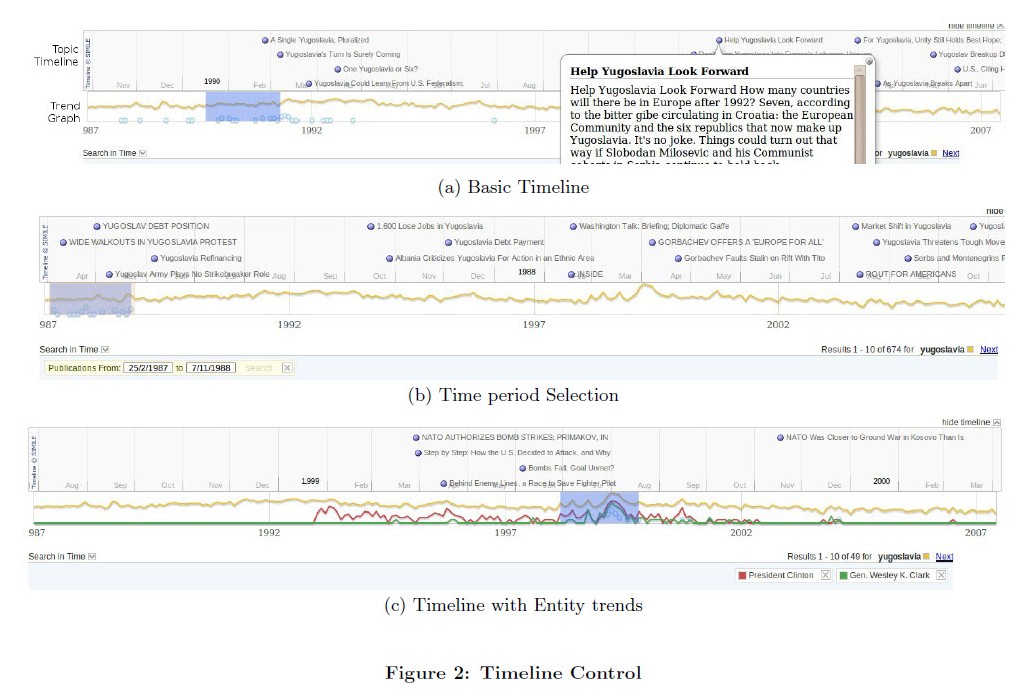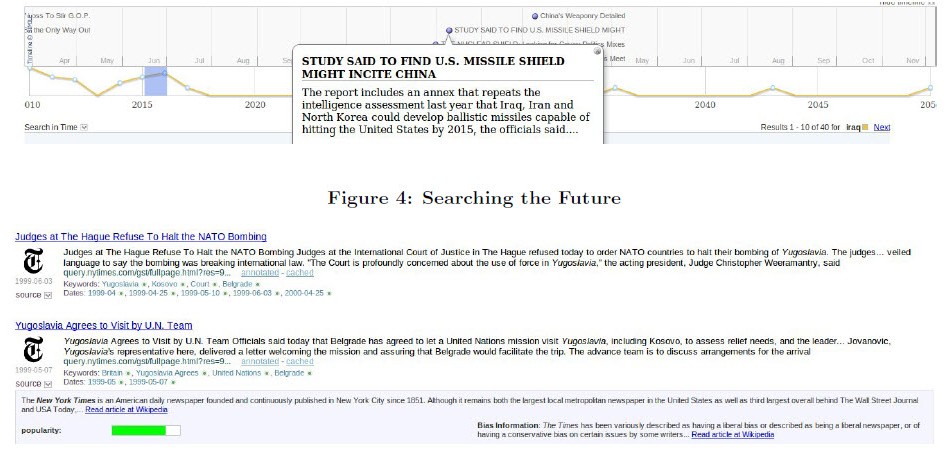Yahoo! is providing its users with a tool that enables them to peer into the future. The new application, Time Explorer is a product of the Yahoo!’s research labs team from Barcelona and is designed for analyzing how news changes over time and search for already made predictions on certain things. The application is not unique, still it has a number of improved features and provide users with more relevant and extended results of search.
The ‘forecasts’ are based on a collection of 1.8 million New York Times articles, dating back to 1987. The new tool with intuitive interface helps users to discover the tendencies of covering particular topics, their rates of evolving in the past and predictions, which were made in relation to a range of themes.
The tool has an interactive timeline with brief summaries the articles and publishing dates listed below it and the titles placed above it. The user also can read the names of people, companies, organizations and places, which relate to the articles, in a box to the right, and this information can be also added to the timeline, in case the user wants to compare how the searched term is covered in selected articles.
Users will be able to look into predictions about future events, which will include details on a range of things—the tool makes it probable to “take a sneak peek” into 2015 or even 2040 year. The detailed description of the tool can be found here.
To date, the application works with old articles, but the developers are going to include fresher news as well. «It would be tough to update in real time, but it could certainly be done daily, and I think that would be useful for sure,» said Michael Matthews, a member of the Yahoo research team.
«For most news search engines, recency is a significant factor for relevance,» stated Daniel Tunkelang, a tech lead at Google’s New York office. «The slick visualization allows users to discover unexpected relationships between entities at particular points in time—for example, between Slobodan Milosevic and Saddam Hussein.»

